Sun Care
Sun care products are your first line of defense against the sun’s intense ultraviolet rays, which pose the risk of sunburn, can accelerate skin aging, and increase the risk of skin cancers. Our collection includes a broad spectrum of sunscreens with various SPF levels, as well as after-sun lotions, lip balms, and sunburn relief gels, all designed to provide essential protection and care for your skin during sun exposure. Read More…

-
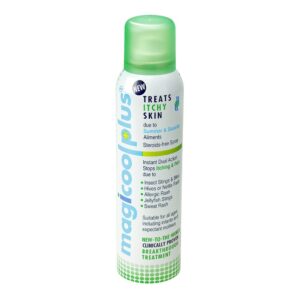
Magicool Plus Itchy Skin – 150ml
- Fast & Effective Itching Relief
- Stops Itching From Insect Stings, Allergic Rashes, Jellyfish Stings & more!
- Buy With Confidence From UK Registered Pharmacy
£11.49 Read more -
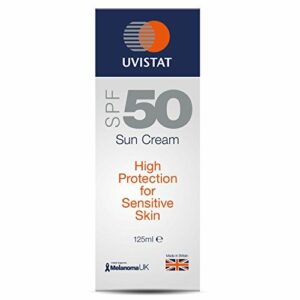
Uvistat SPF50 Sun Cream 125ml
- Suitable For Sensitive Skin
- SPF50 High Protection
- Protects and Moisturises
£16.79 Add to basket -
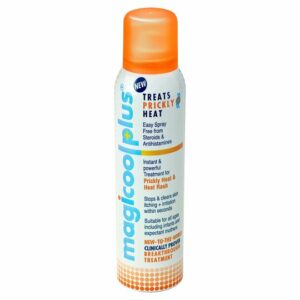
Magicool Prickly Heat Spray – 150ml
- Effective Prickly Heat Relief
- Suitable For All Ages
- Buy With Confidence From UK Registered Pharmacy
£11.49 Read more -
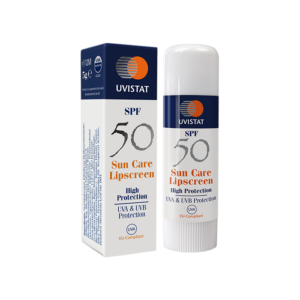
Uvistat Lipscreen SPF50 – 5g
- Effective Sun Care
- Suitable For Adults & Kids
- Buy With Confidence From UK Registered Pharmacy
£7.79 Add to basket -
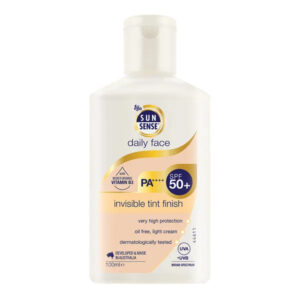
SunSense Daily Face Invisible Tint SPF50+ 100ml
- SPF50 High Protection
- Fragrance Free
- Oil-Free Base
£24.99 Add to basket -
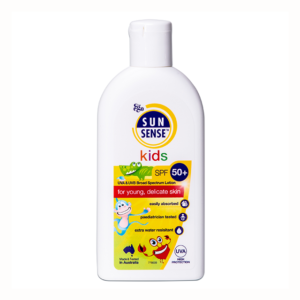
SunSense Kids SPF50+ – 125ml
- Easily absorbed
- Extra water resistant
- Paediatrician tested
£16.79 Read more -
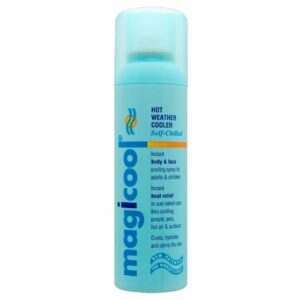
Magicool Hot Weather Cooler – 200ml
- Instant body & face cooling spray for adults & children
- Cools, hydrates and calms the skin
- Buy with confidence from a registered UK pharmacy
£12.49 Read more -
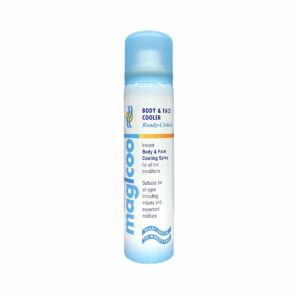
Magicool Body & Face Cooler – 75ml
- Unique, patented, pioneering, world’s first, breakthrough, micro-fine cooling spray
- 'Your very own air-conditioner'
- Buy with confidence from a registered UK pharmacy
£9.19 Read more -
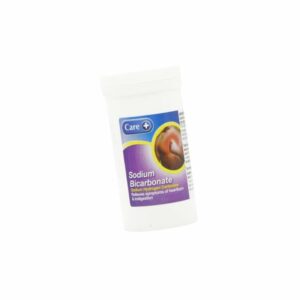
Care Sodium Bicarbonate 300g
- Provides Relief From Insect Bites And Sunburn
- Can Be Used Topically Or Orally
- Effective Relief From Heartburn
£5.19 Select options -
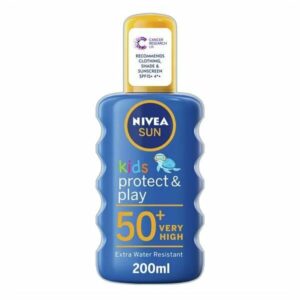
Nivea Kids Swim & Play Sun Lotion SPF 50+ 200ml
- Immediately Protects Against Sunburn & Long-Term Skin Damage
- Highly effective UVA/UVB Protection
- Caring Extra Water-Resistant Formula For Children’s Delicate Skin
£13.49 Add to basket -
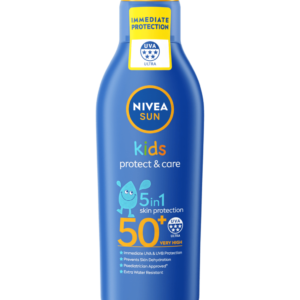
Nivea Kids Protect & Care Sun Lotion SPF50+ 200ml
- Effective Sun Care
- Suitable For Most Skin Types
- Buy With Confidence From UK Registered Pharmacy
£19.99 Add to basket -
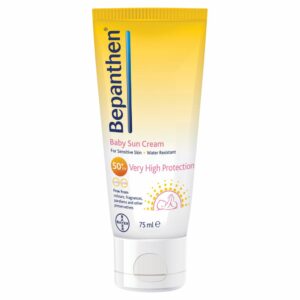
Bepanthen Baby Suncream SPF50+ 75ml
- Immediately Protects Against Sunburn & Long-Term Skin Damage
- Highly effective UVA/UVB Protection
- Caring Extra Water-Resistant Formula For Children’s Delicate Skin
£9.99 Read more
-
About Sun Care Products
Sun care products are designed to protect the skin from the harmful effects of the sun’s ultraviolet (UV) rays. Prolonged exposure to UV radiation can lead to a range of skin issues, including sunburn, premature aging, and an increased risk of skin cancer, particularly melanoma. Sunscreens, a crucial component of sun care, work by either absorbing or reflecting UV rays to prevent them from penetrating the skin. They come in various forms, including creams, lotions, sprays, and gels, and are rated by their Sun Protection Factor (SPF), which indicates the level of protection they provide.
After-sun lotions are formulated to soothe and hydrate the skin after exposure to the sun, helping to alleviate redness and prevent peeling. They often contain ingredients like aloe vera, which has cooling and anti-inflammatory properties.
Lip balms with SPF are specifically designed to protect the delicate skin of the lips, which is particularly susceptible to sunburn.
Sunburn relief gels offer immediate soothing relief for sunburned skin, reducing discomfort and aiding in the skin’s healing process.
Overall, the consistent use of sun care products is vital for maintaining healthy skin and preventing the long-term consequences of sun exposure.
-
Symptoms
Not using sun care products can lead to various skin conditions resulting from overexposure to the sun’s ultraviolet (UV) rays. Some of the common symptoms associated with these conditions include:
Sunburn: Red, painful skin that feels hot to the touch. In severe cases, sunburn can cause swelling, blistering, and peeling.
Premature Aging: Signs include fine lines, wrinkles, age spots, and a leathery texture of the skin, resulting from the breakdown of collagen and elastin due to UV exposure.
Actinic Keratosis: Rough, scaly patches on the skin, often found on areas most exposed to the sun, like the face, ears, and hands. These are considered precancerous growths.
Heat Rash: Small, itchy red bumps or blisters that can appear when sweat ducts become blocked and inflamed, often due to excessive heat and sweating.
Photosensitivity: An increased sensitivity to sunlight, resulting in rashes or sunburns even after minimal exposure.
Solar Urticaria: A rare condition characterized by hives or a rash that appears on the skin within minutes of sun exposure.
Skin Cancer: The most serious consequence of prolonged UV exposure. Symptoms include new or changing moles, sores that do not heal, and abnormal growths on the skin.These symptoms can vary in severity and may require different levels of medical attention. It’s crucial to use sun care products and adopt protective measures to minimize the risk of these conditions.
-
Diagnosis
The diagnosis of conditions resulting from prolonged sun exposure typically involves a combination of visual examination and, in some cases, diagnostic tests. Here’s how medical experts diagnose common sun-related skin conditions:
Sunburn: Diagnosis is usually based on a visual examination of the skin. The severity of the sunburn can be assessed by the extent of redness, pain, and blistering.
Premature Aging: Dermatologists can diagnose signs of premature aging through a physical examination of the skin. They may use tools like a dermatoscope to examine fine lines, wrinkles, and age spots in detail.
Actinic Keratosis: A dermatologist will examine the skin for rough, scaly patches. A biopsy may be performed to rule out skin cancer by removing a small piece of skin for laboratory analysis.
Heat Rash: This condition is typically diagnosed based on the appearance of the rash and the patient’s history of recent heat exposure or sweating.
Photosensitivity: Diagnosis involves taking a detailed medical history and conducting a physical examination. Phototesting, which involves exposing small areas of the skin to different wavelengths of light, may be used to confirm the diagnosis.
Solar Urticaria: A diagnosis is made based on the appearance of the rash and its rapid onset after sun exposure. Phototesting can also be used to determine the specific wavelengths of light that trigger the reaction.
Skin Cancer: If skin cancer is suspected, a dermatologist will perform a biopsy by removing a sample of the suspicious skin for laboratory analysis. Further tests, such as imaging scans, may be required to determine the extent of the cancer.
Early diagnosis and treatment are crucial for managing these conditions effectively and preventing further damage. Regular skin examinations by a dermatologist are recommended, especially for individuals with a history of extensive sun exposure.
-
Treatments
Our sun care products are specially selected to protect your skin from the damaging effects of the sun, offering a broad spectrum of protection against both UVA and UVB rays. Regular use of these products can significantly decrease the risk of skin cancers and skin precancers, such as squamous cell carcinoma and melanoma. For example, studies have shown that daily use of SPF 15 sunscreen can reduce the risk of developing squamous cell carcinoma by about 40% and melanoma risk by 50%. Moreover, our sunscreens can help prevent premature skin aging, such as wrinkles, sagging, and age spots, which are often a result of unprotected exposure to the sun.
Highlighted products that we recommend:
Magicool Plus Itchy Skin is a versatile product that offers fast and effective relief from itching, which can be caused by insect stings, allergic rashes, or jellyfish stings. It is suitable for use on skin that has been irritated by the sun.
Uvistat SPF50 Sun Cream is suitable for sensitive skin and provides high SPF protection, helping to prevent sunburn and damage. This sunscreen cream not only protects but also moisturizes the skin.
Magicool Prickly Heat Spray is an effective solution for prickly heat, which can be a troublesome condition in hot weather or when the skin is exposed to the sun for prolonged periods.
Uvistat Lipscreen SPF50 offers targeted protection for the lips, which are often overlooked when applying sunscreen. This product is effective for both adults and kids, ensuring that the delicate skin on the lips is shielded from harmful UV rays.Incorporating these products into your daily routine is essential, especially when spending time outdoors. Remember to apply sunscreen at least 30 minutes before going outside and reapply every two hours, or immediately after swimming or sweating, to maintain effective protection. Additionally, using a sufficient amount of sunscreen is critical to ensure full protection — about a shot glass full for the entire body per application.
-
Prevention Strategies
Protecting your skin from the sun’s harmful rays is critical to prevent skin damage, aging, and cancer. Here are some essential prevention tips:
Broad-Spectrum Sunscreen: Use a broad-spectrum, water-resistant sunscreen with an SPF of at least 30. Apply it generously to all exposed skin and reapply approximately every 2 hours, or more often if swimming or sweating.
Protective Clothing: Wear long-sleeved shirts, pants, and a wide-brimmed hat to cover as much skin as possible. Opt for clothing with a UV protection factor (UPF), which provides more effective shielding against UV rays.
Seek Shade: The sun’s rays are strongest between 10 a.m. and 4 p.m., so seek shade during these hours. Be mindful that reflective surfaces like water, snow, and sand can intensify sun exposure.
Wear Sunglasses: Protect your eyes with UV-blocking sunglasses to reduce the risk of cataracts and other eye issues.
Avoid Tanning Beds: Ultraviolet light from tanning beds can cause skin cancer and wrinkling, so it’s best to avoid them.
Lip Protection: Use a lip balm with an SPF of at least 15 to shield your lips from sun damage.
Routine Skin Checks: Regularly examine your skin for any changes or abnormalities and consult a healthcare provider if you notice anything concerning.
Avoid Peak Sun Times: Try to plan outdoor activities for times when the sun is less intense, typically in the early morning or late afternoon.
Stay Hydrated: Keep your skin hydrated by drinking plenty of water, especially on hot days or when you’re out in the sun for extended periods.
Healthy Diet: Support skin health from the inside out with a diet rich in antioxidants and vitamin D.Remember that no sunscreen can block UV radiation completely. When used in combination with other protection methods, you significantly reduce your risk of harm. For children over 6 months, use sunscreen liberally and reapply as needed. Infants under 6 months should be kept out of the sun and protected with clothing and shade.












